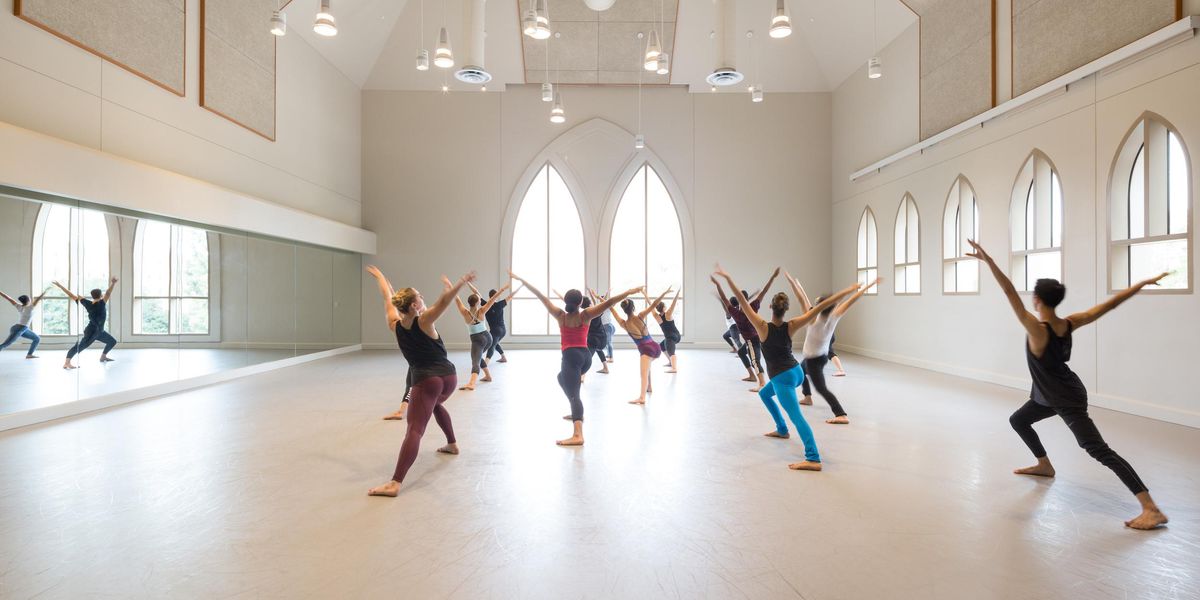Can Dance and Science Merge Artistically in Performance?
Well if anyone can do it, Liz Lerman can. I just saw her Ferocious Beauty: Genome at the Kasser Theater’s Peak Performances series at Montclair State University in NJ. It’s amazing how she lets the piece teach you stuff about science. I learned that we have three trillion cells in our bodies, that death is programmed in every cell, that DNA is just part of a genome, and that each scientist has their own metaphor for a genome.
But it warn’t just school learning. There were moments in this multi-media opus that took my breath away, purely aesthetically. One moment came after the genome was compared to a zipper by one of the scientists interviewed on film. A live camera zooms in on the main character (played with gusto by Gesel Mason) unzipping clothing, baring the bare back of a dancer. Each time, it allows us to see a phrase written on the person’s back:
Mistakes permit change.
Change equals evolution.
Evolution requires time.
Knowledge is a blessing.
Slow down.
My DNA traveled through time and now it’s mine.
It reminded me of one of Yvonne Rainer’s early films, where, as the camera slowly zoomed in to a still figure (Yvonne), you realized that she had notes with words written on them stuck to her body. Both women have a sneaky way of getting their messages out.
I love Lerman’s playfulness. At one point the thought was projected on the back scrim: “What if scientists were choreographers?” And then we proceed to hear scientists describe what they would like to see (their fantasies of humans acting as DNA?). One says, “Lay out all the dancers and stretch them out head to foot.” The ensuing film footage plays with that image, and so do the dancers. Another scientist talks about data falling away, and you see a film of dancers rolling into and off of his lap.
Lerman has a gem of a performer in Martha Wittman, the older woman dancer who has been with the Liz Lerman Dance Exchange for more than 10 years. Her dynamics are so clear, her hand movements so poignant, her attention to objects (an apple, a pair of tiny crutches) so caring that she provides her own little world of gravitas. At one point she seems to be getting sick and collapses into the arms of Ted Johnson. As she was weakening, she thrust her arm into the air just as The Dying Swan would do. And then that arm crazily swatted at this face—like you would imagine your mother as if she were dying in your arms.
In full disclosure, I am not one bit objective about either Liz Lerman or Martha Wittman because I go way back with both of them, to my student days at Bennington in the 1960s. But I do think that Lerman, in putting older dancers like Martha Wittman and Thomas Dwyer onstage, in using scientists as theatrical characters (not to mention as inspirations), and in searching for metaphors for basic things like DNA, is expanding our idea of beauty—ferocious or otherwise. By the end of the piece, the scientists have become artists (in the most beguiling ways) and the dancers have become researchers and storytellers. And the whale has become….well you have to see it.
Not the least part of the fun was riding back to NYC on a train with a few other people—all of us edified, amused, or agitated by the piece. We discussed it heatedly, reliving the questions anew.




